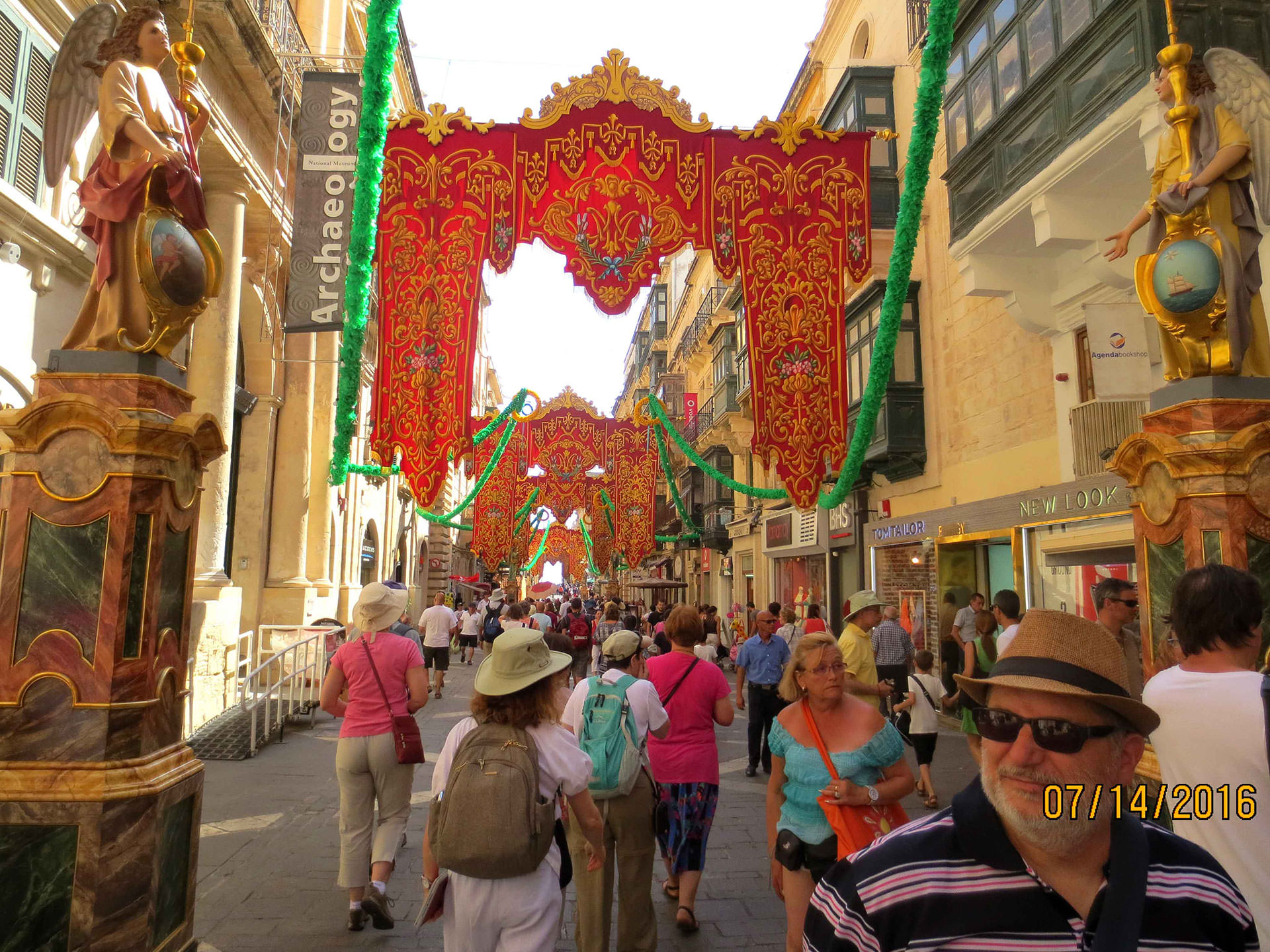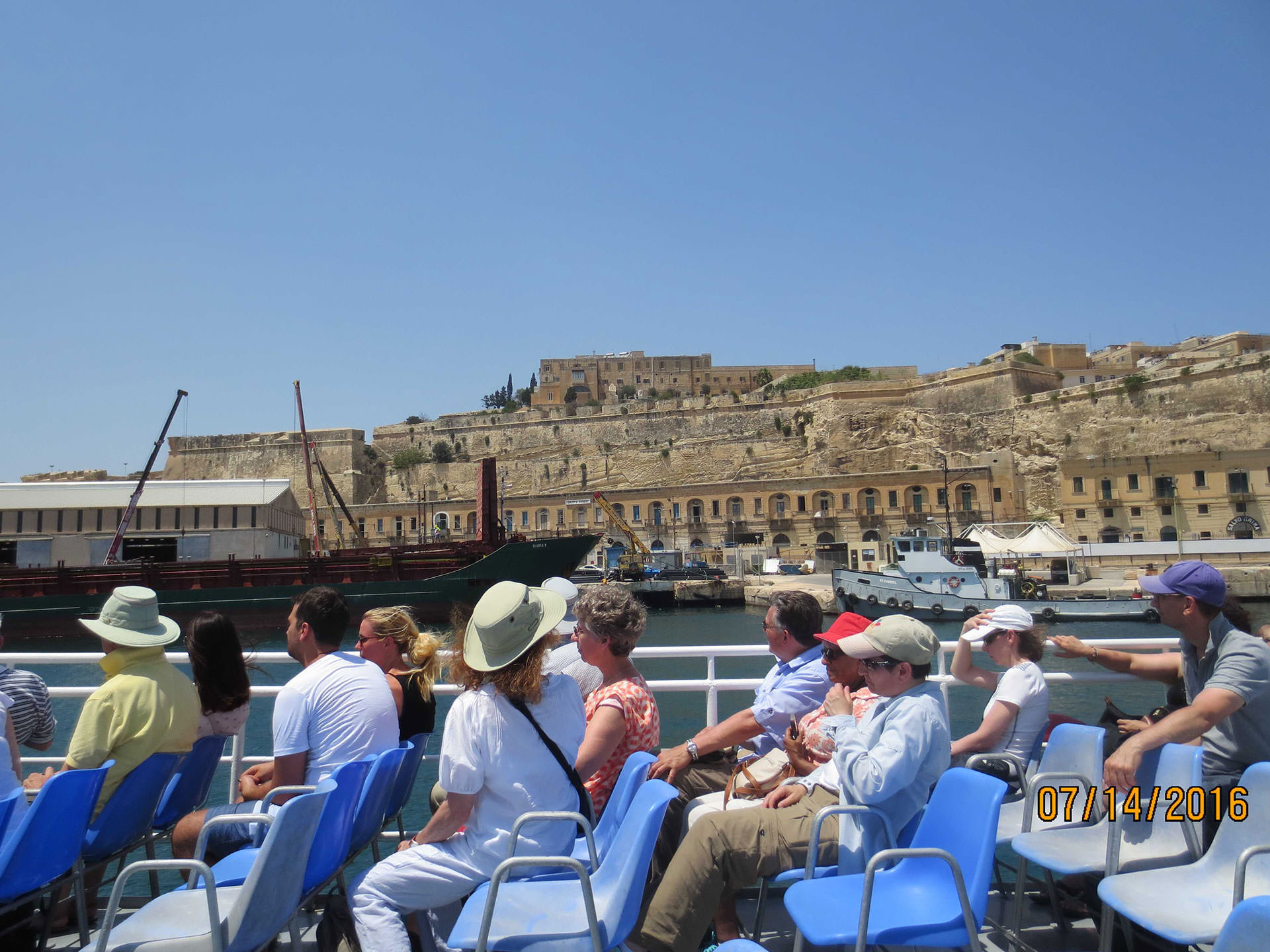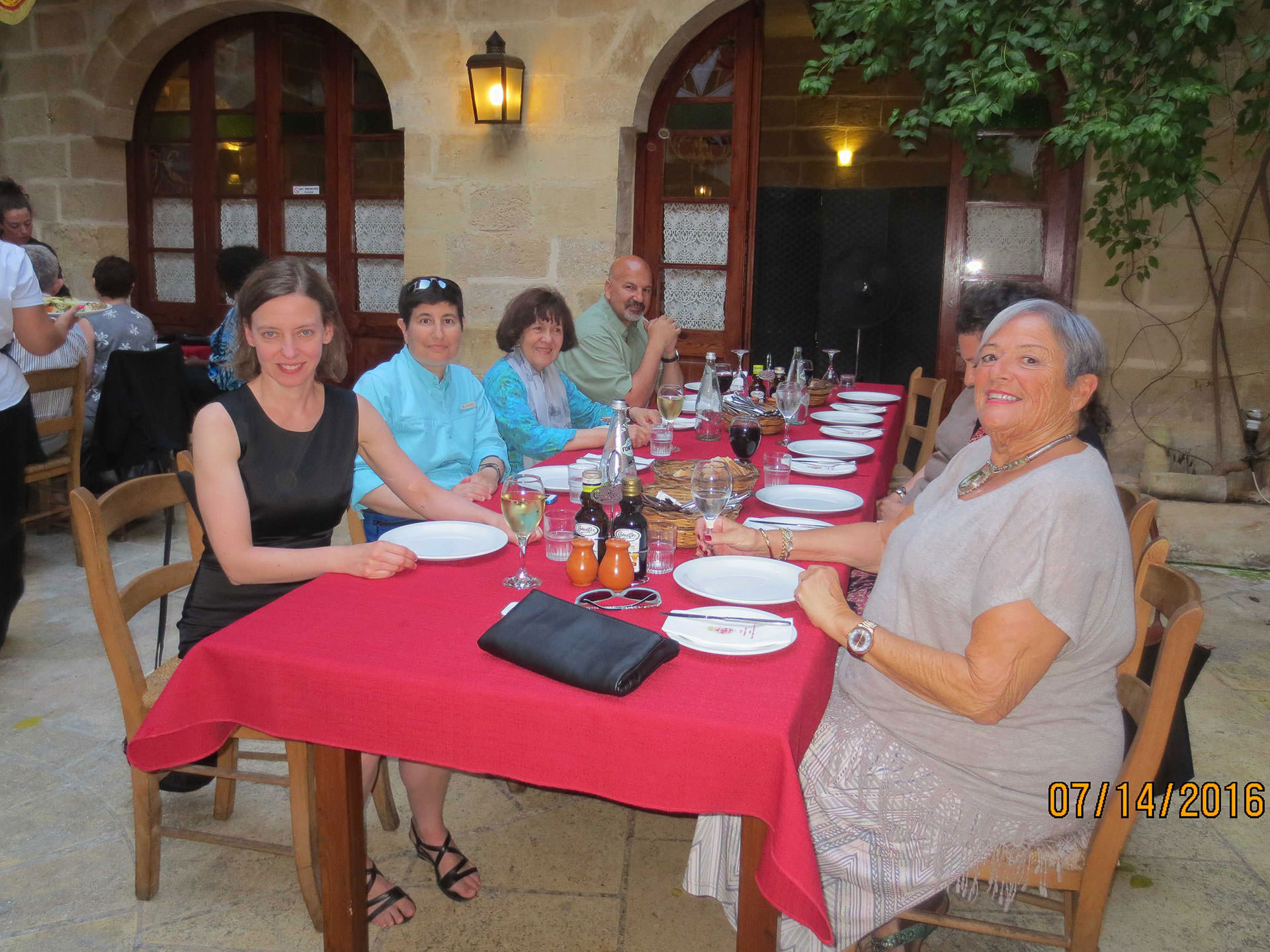24 Aug In The Footsteps of Paul
The July 2016 sold-out study-tour “In The Footsteps of Paul” to Cyprus, Malta and Italy was a great success. The group enjoyed good weather, wonderful sites, stimulating conversations and lots of learning.
We started in Cyprus where our visit to the Church and tomb of Lazarus renewed our hope for the time when we are risen to new life in Christ. This invitation is a gift offered to us at every moment. The Church of Panagia Angeloktisti is a Greek Orthodox parish where the faithful bring to life fellowship and community-a living example of communion with all.
A highlight in Cyprus was the Pillar of St. Paul. St. He visited Pafos in 45 A.D. and received 40 lashes for evangelizing on the island. We had time to reflect on the work and struggles Paul faced as he went about on his missionary journey to preach the gospel and convert the island to Christianity.
Bidding farewell to the hot weather and beaches of Cyprus we flew to Malta, an archipelago 65 kilometres south of Sicily. The island of Malta is rich in ancient and Christian history. The magnificent shores and fishing villages reflect the hearts of the Maltese people who treasure family and Catholic traditions, and warmly welcome all visitors as one of their own.
Malta was visited and conquered repeatedly over the centuries, from the Knights of the Order of Saint John to the British Royal Navy. Malta wears its history well, especially in its 364 Roman Catholic churches that are part of the legacy of Paul’s shipwreck. Street decorations telegraphed their passionate celebration of Christian festivals, an expression of faith and spirituality, which was attended by several participants during an evening outing in Valletta.
On to Rome we delighted in the history and art of the Vatican, the tombs of Popes and the wonderful gelato! Travelling to the mountains outside of Rome, we visited the town of Tivoli, stopping first at the sprawling estate of Hadrian’s Villa (Villa Adriana), before visiting Villa d’Este and its splendid fountains and terraced Renaissance gardens. An extended period of free time allowed a contemplative period of reflection in the gardens to ponder questions from history to spirituality. From monastery to cardinal residence to today’s tourist attraction with a functioning pipe organ inside one of its fountains, the villa and gardens retain a calming atmosphere and the solitude of winding paths that invite the visitor to meditation and reflection.
The group agreed that 2 weeks was only enough time to receive a small taste of the history and culture of these three countries.
By Patricia O’Reilly










